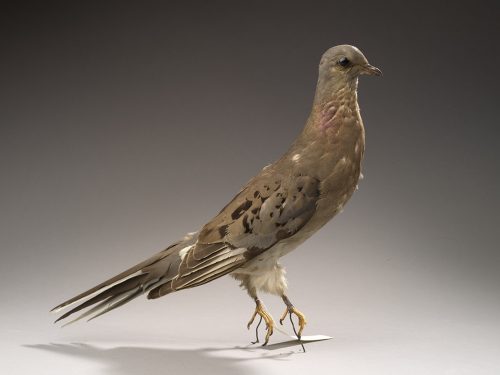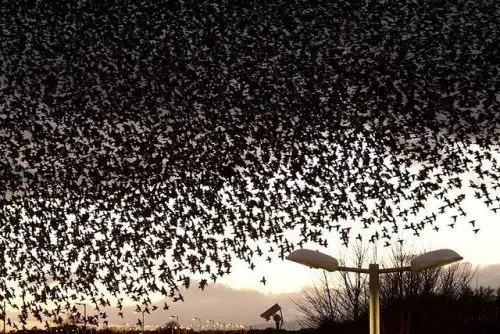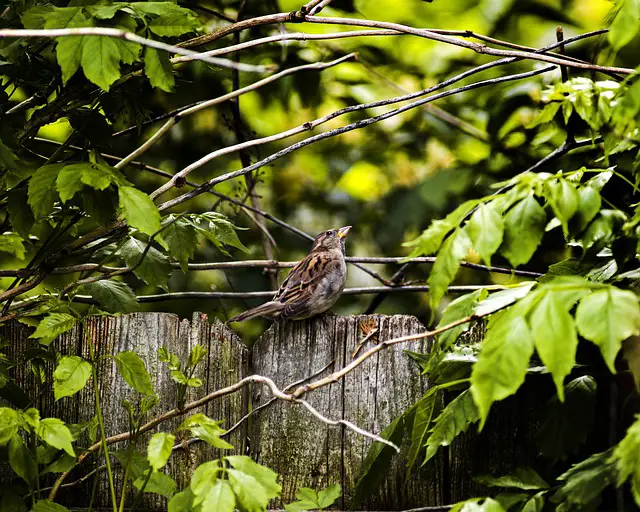The passenger pigeon (Ectopistes migratorius) is an extinct pigeon that was once widespread throughout North America. It was possibly the world’s most abundant bird in those times with the total population of almost three billion. The extinction of a bird that was once numbered in millions leaves biologists to wonder how it went extinct. The passenger pigeon is also called wild pigeon.
Passenger Pigeon Facts
Anatomy
- The overall length of an adult male was about 39 to 41 cm (15.4 to 16.1 in) and they weighed up to 260 and 340 g (9 and 12 oz).
- Adult females averaged 38 to 40 cm (14.9 to 15.7 in) in head-body length. It had dull colored feathers as compared to males down. However the female had a brown forehead that looked like a crown.
- Adult males had 175–210 mm (6.8–8.2 in) long tail females had 150–200 mm (5.9–7.8 in).
- The bird’s tarsus measured about 26–28 mm (1–1.1 in).
- The measurement of the male’s wing was about 196–215 mm (7.7–8.4 in) and it had 15–18 mm (0.6–0.7 in) long bill. The size of the bill was same in both males and females.
- Like many other pigeon species, the passenger pigeon was mainly recognized by its bluish-gray head and neck. There are iridescent feathers on the sides of the neck and they are bright brown to golden green in color. It goes bright when the light shines on it.
- The passenger pigeon’s tail had got some blackish spots that were clearly visible when the bird was flying.
- The legs and feet were red but the pigeon’s was completely black.
- Young pigeon appeared more like an adult female (in physical features) but unlike female it did not have spots on its wings.
- They had long pointed wings which were extremely helpful in flying fast. Passenger pigeons were adapted to not only fly fast but it could also maneuver itself rather quickly. Today pigeons lack this ability.

Geographic Range & Habitat
- The passenger pigeon had occupied much of the North America including Atlantic coast in the east, Rocky Mountains, Great Plains, north of Mississippi, and south of Canada.
- They had made homes in primary habitats like deciduous forests. Passenger pigeons used to prefer forests that were abundant in white oaks.
- A large number of pigeons used to breed in the southern Ontario, Georgia, Oklahoma, Great Lakes states, North Carolina, Gulf Coast, northern Florida, and southern Pennsylvania. Passenger pigeon’s range extended as far as Bermuda, Mexico, Cuba, Ireland, and France.
Behavior
- Passenger pigeons were noisy birds and they used to produce loud alarm calls such as cluck cluck or sometimes harsh sound like “kee-kee-kee-kee” or “tete! tete! tete!”.
- It was thought to be highly migratory traveling hours searching for food. The bird had long inspired the 19th century observers as it flew in flocks that could number in billions.
- The passenger pigeon’s flock was so enormous that one could not see the hint of sky while they flew.
- Pigeons used to fly as high as 1,300 ft (400 m) above the ground.
- During migration the speed at which the passenger pigeon used to travel was 62 mph (100 km/h).
- It had got the ability to maneuver itself in a narrow space and could also fly fast while going through the forests. However fast they might be in the air, passenger pigeons walked awkwardly on land.
- In those times passenger pigeons were believed to be social of all birds.
- When the entire flock needed to roost they found dense forests where the tree branches were thick enough to support the strain of million birds. Individual pigeons piled up on one another instead of sitting just next to it. As it turned out, if the branch was not strong it could break and the birds fell on land.
- They used to bathe in shallow water such as small ponds, streams, or lakes. Passenger pigeons typically bathe minutes after the day breaks.
- They used to drink once a day.
- The average lifespan of passenger pigeons was 15 years in captivity.

Feeding Ecology & Diet
- Passenger pigeons used to rely on mast that was produced from the trees of oaks and beeches. However they had a varied diet that changed seasonally.
- Passenger pigeon’s diet included grapes, mulberries, acorns, chestnuts, cherries, beechnuts, dogwoods, and pokeberries.
- In winter they relied more on nuts while in summer fruits made up much of their diet.
- Passenger pigeons also ate insects and invertebrates including worms, caterpillars, buckwheat, and snails.
- They are believed to fly 62 to 81 mi (100 to 130 km) a day from their roosting sites. Some of them could even travel 100 miles in a day.
- It could also hold many grains of corn or chestnuts in its crop. Passenger pigeons were able to eat 0.1 kg (0.22 lb) of acorns each day.
Reproductive Biology
- The nesting period lasted about 28 – 42 days. Biologists aren’t clear precisely how many times they used to mate in a year.
- Passenger pigeons used to gather on the breeding grounds from March to May.
- They had large colonies that could expand to thousands of acres but the average size was 120 acres (49 ha).
- The female chose a nesting site while the male held responsible for bringing materials and building a nest. It could take 2 – 4 days to build a complete nest. The male usually made nests with twigs.
- Nests were located 6.5 and 66 ft (2.0 and 20.1 m) above the ground and measured 6 in (15 cm) in width. The height of the nest was 2.4 in (6.1 cm) and the bowl was 0.75 in (1.9 cm) deep.
- Passenger pigeons used to mate for life.
- A female laid 1 – 2 white oval-shaped eggs. Eggs measured about 1.56 in (40 mm) by 32 in (34 mm) in size.
- Both parents incubated the eggs that lasted 12 – 14 days.
- Hatchlings were born blind and they are fed by parents for up to two weeks.
- The duration of a passenger pigeon’s nesting cycle is about one month.
- Predators of passenger pigeons were American weasels, raccoons, wolves, mountain lions, owls, hawks, bobcats, bears, American martens, and foxes. Cooper’s hawk was thought to be the main predator which could catch passenger pigeons in flight.





